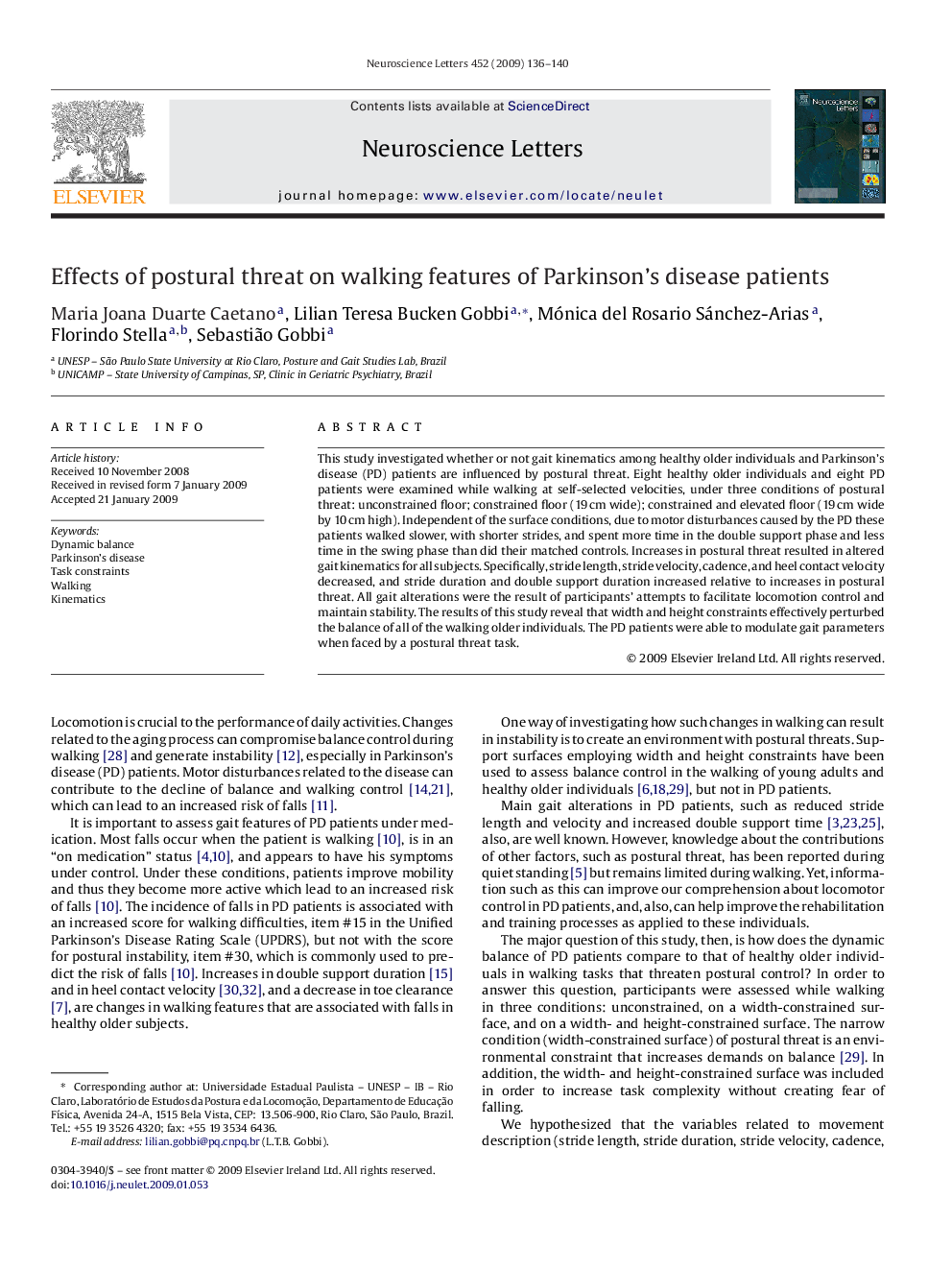| Article ID | Journal | Published Year | Pages | File Type |
|---|---|---|---|---|
| 6285562 | Neuroscience Letters | 2009 | 5 Pages |
Abstract
This study investigated whether or not gait kinematics among healthy older individuals and Parkinson's disease (PD) patients are influenced by postural threat. Eight healthy older individuals and eight PD patients were examined while walking at self-selected velocities, under three conditions of postural threat: unconstrained floor; constrained floor (19Â cm wide); constrained and elevated floor (19Â cm wide by 10Â cm high). Independent of the surface conditions, due to motor disturbances caused by the PD these patients walked slower, with shorter strides, and spent more time in the double support phase and less time in the swing phase than did their matched controls. Increases in postural threat resulted in altered gait kinematics for all subjects. Specifically, stride length, stride velocity, cadence, and heel contact velocity decreased, and stride duration and double support duration increased relative to increases in postural threat. All gait alterations were the result of participants' attempts to facilitate locomotion control and maintain stability. The results of this study reveal that width and height constraints effectively perturbed the balance of all of the walking older individuals. The PD patients were able to modulate gait parameters when faced by a postural threat task.
Related Topics
Life Sciences
Neuroscience
Neuroscience (General)
Authors
Maria Joana Duarte Caetano, Lilian Teresa Bucken Gobbi, Mónica del Rosario Sánchez-Arias, Florindo Stella, Sebastião Gobbi,
